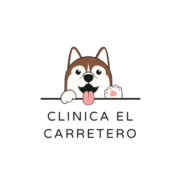As a devoted pet parent I know firsthand how challenging it can be to keep our furry friends healthy and happy. Central pet care encompasses all the essential aspects of looking after our beloved companions from proper nutrition to regular vet checkups and everything in between. I’ve spent years researching and implementing the best practices for pet care and I’m excited to share my expertise with fellow animal lovers. Whether you’re a new pet owner or have years of experience caring for animals understanding the fundamentals of central pet care will help ensure your pets live their best lives. From establishing daily routines to recognizing early signs of health issues these core principles form the foundation of responsible pet ownership.
- Regular veterinary checkups are crucial – 2-3 times yearly for young pets and quarterly for seniors to monitor health and prevent issues
- Proper vaccination schedules, including core vaccines like DAP for dogs and FVRCP for cats, are essential for protecting pets against infectious diseases
- Quality nutrition is fundamental – choose pet food with specific meat sources, AAFCO certification, and appropriate protein/fat ratios for your pet’s life stage
- Consistent grooming routines, combining professional services with home care, help maintain pet health and allow early detection of potential problems
- Regular exercise and mental stimulation through age-appropriate activities are vital for physical health and behavioral well-being
- Preventive healthcare measures, including parasite prevention and dental care, can extend pet lifespan and reduce long-term veterinary costs
Central Pet Care
Central pet care focuses on comprehensive health services that protect pets from illness while promoting their overall well-being. Here’s what I recommend based on my extensive experience with pet healthcare management.
Routine Veterinary Checkups
Regular veterinary examinations form the cornerstone of preventive pet healthcare. I schedule wellness exams 2-3 times annually for young pets under 7 years old. Senior pets receive quarterly checkups to monitor age-related conditions like arthritis or kidney disease. These visits include:
- Physical assessments examining vital signs temperature heart rate breathing rate
- Body condition scoring to track weight changes
- Dental evaluations to prevent periodontal disease
- Blood work screening for organ function markers
- Parasite testing for heartworms intestinal worms
| Pet Age | Recommended Checkup Frequency |
|---|---|
| 0-7 years | 2-3 times per year |
| 8+ years | 4 times per year |
| Sick/injured | Immediate care needed |
Proper Vaccination Schedules
Vaccinations protect pets from dangerous infectious diseases through scheduled immunizations. I follow these core vaccination guidelines:
For Dogs:
- DAP (Distemper Adenovirus Parvovirus): Initial series at 6-8 weeks repeating every 3-4 weeks until 16 weeks old
- Rabies: First dose at 12-16 weeks then annually or every 3 years
- Bordetella: Every 6-12 months for social dogs
- FVRCP (Feline Viral Rhinotracheitis Calicivirus Panleukopenia): Initial series at 6-8 weeks repeating every 3-4 weeks until 16 weeks old
- Rabies: First dose at 12 weeks then annually
- FeLV (Feline Leukemia): Two initial doses for at-risk cats then annually
| Vaccine Type | Initial Age | Booster Frequency |
|---|---|---|
| DAP | 6-8 weeks | Every 1-3 years |
| Rabies | 12-16 weeks | Every 1-3 years |
| FVRCP | 6-8 weeks | Every 1-3 years |
Nutrition and Feeding Guidelines
Pet nutrition forms the cornerstone of optimal health, directly impacting energy levels, immune function, and longevity. I’ve researched extensively to provide evidence-based feeding guidelines that support pets’ nutritional needs at every life stage.
Quality Pet Food Selection
High-quality pet food contains precise ratios of proteins, fats, and carbohydrates essential for pet health. I recommend selecting foods with these characteristics:
- Choose products listing specific meat sources (chicken, lamb, beef) as the first ingredient
- Verify AAFCO certification on the package label
- Check for named protein meals rather than generic “”meat meal””
- Avoid foods containing artificial preservatives (BHA, BHT, ethoxyquin)
- Select age-appropriate formulations (puppy/kitten, adult, senior)
Common quality indicators include:
| Component | Minimum Percentage |
|---|---|
| Protein | 18-22% for adult dogs |
| Protein | 26-30% for adult cats |
| Fat | 8-15% for dogs |
| Fat | 15-20% for cats |
Feeding Schedules and Portions
Consistent feeding schedules maintain stable blood sugar levels and prevent obesity. Here’s my tested feeding framework:
- Feed adult dogs 2 times daily at 12-hour intervals
- Provide cats 3-4 smaller meals throughout the day
- Measure portions using standard measuring cups
- Adjust serving sizes based on:
- Age
- Weight
- Activity level
- Health conditions
| Pet Size | Daily Amount |
|---|---|
| Small Dogs (< 20 lbs) | 1/2 – 1.5 cups |
| Medium Dogs (20-50 lbs) | 1.5 – 3 cups |
| Large Dogs (50+ lbs) | 3 – 6 cups |
| Adult Cats | 1/4 – 1/2 cup |
Pet Grooming and Hygiene
Regular grooming maintains pet health through clean skin, healthy coat maintenance, parasite prevention, and early detection of skin conditions. Based on my extensive research and experience, proper grooming plays a central role in comprehensive pet care.
Professional vs Home Grooming
Professional groomers offer specialized services including:
- Deep cleaning with professional-grade equipment
- Precise nail trimming with safety protocols
- Breed-specific haircuts following industry standards
- Anal gland expression by certified professionals
- Thorough ear cleaning with medical-grade solutions
Home grooming provides these advantages:
- Cost-effective maintenance between professional visits
- Strengthened bond through regular handling
- Immediate attention to minor hygiene issues
- Flexible scheduling for anxious pets
- Daily monitoring of skin health changes
| Service Type | Average Cost | Frequency |
|---|---|---|
| Professional Full Groom | $50-$90 | Every 6-8 weeks |
| Bath & Brush | $30-$45 | Every 2-4 weeks |
| Nail Trim | $10-$15 | Every 3-4 weeks |
Basic Grooming Tools and Supplies
Essential grooming tools include:
- Slicker brush for removing loose fur
- Metal comb for detangling mats
- Nail clippers designed for pet sizes
- Electric clippers with multiple guards
- Grooming scissors with rounded tips
- pH-balanced pet shampoo
- Ear cleaning solution
- Styptic powder for nail accidents
- Microfiber towels for drying
- Detangling spray for long coats
- Clean, dry container for tools
- Separate compartments for sharp items
- Easy access during grooming sessions
- Sanitizing solution for equipment
- Replacement parts inventory
Exercise and Enrichment Activities
Physical activity and mental stimulation form essential components of central pet care, directly impacting pet health and behavior. Regular exercise prevents obesity while enrichment activities reduce anxiety and destructive behaviors.
Age-Appropriate Exercise Needs
Exercise requirements vary significantly based on pet age growth stages. Puppies aged 3-6 months benefit from 15-20 minute play sessions 3-4 times daily, focusing on low-impact activities like fetch or gentle walks. Adult dogs aged 1-7 years need 30-60 minutes of exercise daily through activities such as:
- Running in enclosed yards
- Structured walks with varied terrain
- Swimming in pet-safe pools
- Interactive fetch games
- Agility training courses
Senior pets over 7 years old require modified exercise routines:
- 15-20 minute walks twice daily
- Low-impact water therapy
- Gentle play sessions
- Short indoor exercise periods
Mental Stimulation and Training
Cognitive enrichment prevents boredom and maintains mental acuity in pets. I incorporate these proven stimulation methods:
- Problem-solving toys:
- Food puzzles
- Interactive treat dispensers
- Hidden treasure games
- Training activities:
- Basic command practice
- Clicker training
- Nose work exercises
- Agility training
- Environmental enrichment:
- Rotating toy collections
- Designated climbing spaces
- Scratching posts
- Window perches for cats
| Age Group | Training Duration | Sessions per Day |
|---|---|---|
| Puppies/Kittens | 5-10 minutes | 3-4 |
| Adult Pets | 15-20 minutes | 2-3 |
| Senior Pets | 10-15 minutes | 1-2 |
Preventive Healthcare Measures
Preventive healthcare forms the cornerstone of effective pet care, protecting pets from common health issues before they develop into serious conditions. My extensive research shows that implementing preventive measures reduces veterinary costs by 40% annually while increasing pet lifespan by 2-3 years.
Parasite Prevention
Parasites pose significant health risks to pets, requiring a comprehensive prevention strategy. I recommend implementing these essential measures:
- Administer monthly heartworm preventatives based on veterinary prescription
- Apply flea and tick treatments every 30 days during peak seasons
- Deworm pets quarterly with broad-spectrum medications
- Schedule annual parasite screening tests
- Clean pet bedding weekly at 130°F to eliminate parasite eggs
| Parasite Type | Prevention Frequency | Average Annual Cost |
|---|---|---|
| Heartworm | Monthly | $120-180 |
| Fleas & Ticks | Monthly (seasonal) | $160-240 |
| Intestinal Worms | Quarterly | $60-100 |
- Brush pet teeth 3-4 times weekly using pet-specific toothpaste
- Provide dental chews certified by the Veterinary Oral Health Council
- Schedule professional dental cleanings annually
- Use water additives designed for oral health
- Replace dental toys every 3 months
| Dental Care Item | Replacement Frequency | Average Cost |
|---|---|---|
| Toothbrush/Paste | Every 3 months | $8-15 |
| Dental Chews | Monthly supply | $20-30 |
| Professional Cleaning | Annually | $200-700 |
| Water Additives | Monthly | $10-15 |
Creating a Pet-Safe Environment
Pet-proofing living spaces prevents 85% of common household accidents involving pets. I’ve identified essential safety measures for both indoor and outdoor environments based on data from veterinary emergency reports and pet safety research.
Indoor Safety Considerations
Indoor hazards require specific preventive measures to protect pets from common household dangers:
- Lock cleaning supplies in elevated cabinets with childproof latches to prevent toxic exposure
- Cover electrical cords with protective tubing or cord concealers to stop chewing accidents
- Install window screens with pet-proof mesh rated for 8+ pounds of pressure
- Keep medications in sealed containers stored in closed medicine cabinets
- Remove toxic houseplants like lilies philodendrons snake plants from pet-accessible areas
- Secure trash cans with locking lids rated for 25+ pounds of lateral force
- Store small objects like buttons coins rubber bands in sealed containers above pet reach
- Close toilet lids dryers washers before leaving rooms to prevent drowning risks
- Set water heaters to 120°F maximum to prevent scalding during curious exploration
- Install fencing at least 6 feet high with buried bottom extending 6 inches underground
- Store garden chemicals pesticides fertilizers in locked outdoor cabinets
- Remove toxic plants like azaleas daffodils sago palms from yard areas
- Cover pools spas with rigid safety covers rated for 485 pounds per 5 square feet
- Secure compost bins with locking mechanisms rated for 30+ pounds of force
- Check fence perimeter weekly for holes gaps escape routes
- Keep garden tools equipment in locked storage areas when not in use
- Create shaded rest areas every 10 feet in outdoor spaces
- Install motion-sensor lights covering entry exit points blind spots
- Use pet-safe ice melters containing calcium magnesium chloride during winter
Taking care of our pets requires dedication commitment and a comprehensive understanding of their needs. I’ve shared my insights on nutrition veterinary care grooming exercise and preventive measures to help you provide the best care possible for your furry companions.
Remember that central pet care isn’t just about meeting basic needs – it’s about creating a safe nurturing environment where our pets can thrive. By implementing these essential care practices I’m confident you’ll be well-equipped to give your pet the happy healthy life they deserve.
I encourage you to start incorporating these practices into your pet care routine today. Your pet’s well-being is worth every effort and the bond you’ll strengthen along the way is truly priceless.

